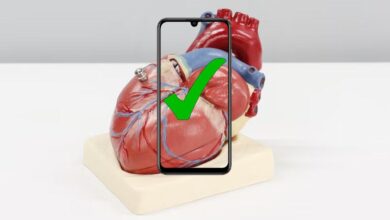
Heart disease is the top cause of death in women but few know warning signs. This often overlooked issue demands our attention. While heart disease is frequently associated with men, women face a similar, if not more insidious, threat. Societal and cultural norms can mask the subtle symptoms, leading to delayed diagnosis and potentially devastating consequences. Understanding the warning signs, risk factors, and preventive measures is crucial for women’s overall health and well-being.
This article delves into the complexities of heart disease in women, highlighting the unique symptoms, risk factors, and preventative measures. We’ll explore the subtle differences in symptoms between men and women, shedding light on the importance of recognizing atypical warning signs. Further, we’ll examine the impact of lifestyle choices, family history, and underlying conditions on women’s heart health.
Finally, we’ll discuss the importance of early detection and intervention, empowering women to take control of their heart health.
Heart Disease in Women: A Silent Killer
Heart disease remains the leading cause of death for women worldwide, a stark reality often overshadowed by other health concerns. While men frequently experience more aggressive, easily recognized symptoms, women often present with subtle and less dramatic manifestations. This often leads to delayed diagnosis and treatment, increasing the risk of severe complications. Understanding the unique presentation of heart disease in women is crucial for early detection and improved outcomes.
Prevalence and Societal Factors
Heart disease’s prevalence as the leading cause of death in women underscores the critical need for heightened awareness and improved prevention strategies. Cultural norms and societal expectations can significantly impact how women experience and report symptoms. Often, women are taught to prioritize the needs of others, potentially suppressing their own health concerns. This societal conditioning, coupled with the tendency for women’s symptoms to be dismissed or underestimated, creates a significant barrier to early diagnosis.
Furthermore, stress and emotional factors often play a role in the development and progression of heart disease, and women may be more susceptible to the cumulative impact of stress due to societal expectations.
Misconceptions about Heart Disease in Women
Many misconceptions persist about heart disease in women, contributing to the delay in diagnosis and treatment. A common misconception is that heart disease is primarily a “man’s disease.” Women may also underestimate their own risk, especially if they lack traditional risk factors like high cholesterol or high blood pressure. This perception can lead to a lack of preventative measures and delay in seeking medical attention.
Furthermore, women may experience different symptoms than men, which can be easily misinterpreted or dismissed.
Symptoms Comparison: Heart Attack in Men vs. Women
| Characteristic | Typical Symptoms in Men | Typical Symptoms in Women |
|---|---|---|
| Chest Pain | Often described as squeezing, pressure, or tightness in the center of the chest. | May present as shortness of breath, back pain, jaw pain, or upper arm pain, sometimes without chest pain. |
| Sweating | Profuse sweating is common. | May experience subtle sweating or no sweating at all. |
| Nausea/Vomiting | Common. | Less common, but may occur. |
| Discomfort in Arms/Jaw | Often occurs in the left arm. | Discomfort can be in either arm or jaw. |
| Anxiety/Dizziness | Less frequently reported. | More commonly reported. |
This table highlights the crucial difference in presenting symptoms. The varied symptoms in women can lead to delayed diagnosis and treatment, which emphasizes the importance of recognizing these atypical presentations. For example, a woman experiencing sudden onset of shortness of breath, jaw pain, or extreme fatigue could be experiencing a heart attack, but may not exhibit the classic chest pain.
Understanding Warning Signs
Heart disease, while often associated with men, is a significant threat to women’s health. Unfortunately, women frequently experience different symptoms, making early detection challenging. Recognizing these subtle signs is crucial for timely intervention and improved outcomes. Understanding these variations is key to empowering women to take charge of their cardiovascular health.Recognizing the subtle warning signs of heart disease in women is vital for early intervention.
Atypical symptoms, often dismissed as something else, can mask underlying heart issues. The importance of paying attention to even seemingly minor changes in daily activities cannot be overstated. This approach can lead to prompt medical attention and potentially life-saving interventions.
Key Warning Signs in Women
Many women experience heart attack symptoms that differ from those commonly associated with men. This is due to variations in how the heart and body respond to the condition. Pay close attention to unusual sensations, even if they seem minor. These subtle changes can indicate a serious underlying problem.
- Fatigue: Persistent and unexplained tiredness, even after adequate rest, can be a significant indicator. This fatigue might differ from typical feelings of exhaustion and can be a warning sign, particularly when accompanied by other symptoms.
- Shortness of Breath: Difficulty breathing, even during light activities, is a common yet often overlooked symptom. This is distinct from typical shortness of breath associated with exertion and can signal a potential heart issue.
- Upper Back Pain: Discomfort or pain in the upper back, particularly if accompanied by other symptoms, can be a warning sign. This pain may be different from typical muscle aches and can signal potential heart problems.
- Nausea or Vomiting: Feeling nauseous or vomiting, without apparent cause, can be a warning sign. These symptoms should not be dismissed, especially if accompanied by other symptoms.
- Changes in Daily Activities: Noticeable changes in the ability to perform everyday tasks, like climbing stairs or carrying groceries, should be investigated. Gradual reductions in physical capabilities can be an early indication of a developing heart problem.
Atypical Symptoms and Potential Causes
Some symptoms of heart disease in women can mimic other conditions, leading to delayed diagnosis. It’s essential to be aware of potential causes that might mask the true nature of the symptoms.
Heart disease sadly claims more women’s lives than any other illness, yet many are unaware of the early warning signs. It’s crucial to shine a light on inclusive wellness, like shining a light on inclusive wellness , to empower women with the knowledge and resources they need to prioritize their heart health. This often involves understanding and addressing the unique risk factors women face, ultimately preventing heart disease from becoming a silent killer.
- Fatigue: Fatigue can stem from various factors, including stress, anxiety, anemia, or thyroid issues. It’s important to consider the context and look for other symptoms to determine the root cause.
- Shortness of Breath: Shortness of breath can result from respiratory illnesses, allergies, or anxiety. The presence of other symptoms, particularly chest pain or discomfort, can point to a heart-related issue.
- Upper Back Pain: Upper back pain is a common complaint with various possible causes, including muscle strain, poor posture, or even gallstones. If pain persists or is accompanied by other symptoms, consult a healthcare professional.
Severity of Warning Signs
The severity of symptoms varies depending on the individual and the specific condition. A thorough medical evaluation is necessary to assess the situation.
| Warning Sign | Potential Severity |
|---|---|
| Persistent fatigue, shortness of breath, or upper back pain | Potentially indicates a serious underlying condition requiring prompt medical attention. |
| Changes in daily activities, nausea, or vomiting | Might be indicative of a heart-related issue and warrants investigation. |
| Mild fatigue or slight shortness of breath | May be due to other factors, but it’s crucial to monitor for any worsening symptoms or additional indicators. |
Risk Factors and Prevention

Heart disease, a silent killer, doesn’t discriminate. While women experience unique challenges in recognizing and managing it, understanding the contributing factors is crucial for prevention. Knowing your risk factors empowers you to make informed choices and take proactive steps towards a healthier heart.Recognizing the interplay between various risk factors is essential. A combination of genetic predisposition, lifestyle choices, and underlying health conditions can significantly increase a woman’s risk of developing heart disease.
Understanding these factors allows for targeted interventions and personalized strategies to mitigate the risk.
Risk Factors for Heart Disease in Women
A multitude of factors contribute to the development of heart disease in women. These include a combination of hereditary influences, lifestyle choices, and pre-existing medical conditions.
- Family History: A strong family history of heart disease, particularly in close female relatives, significantly increases a woman’s risk. This suggests a genetic predisposition to certain risk factors, highlighting the importance of knowing your family medical history.
- Lifestyle Choices: Factors such as diet, physical activity, and smoking habits significantly impact heart health. Unhealthy habits can lead to the development of cardiovascular issues.
- Underlying Conditions: Certain medical conditions, such as high blood pressure, high cholesterol, diabetes, and obesity, increase the risk of heart disease in women. These conditions often coexist and exacerbate each other, potentially accelerating the development of cardiovascular disease.
How Risk Factors Interact
Risk factors rarely act in isolation. Their combined effects can significantly elevate a woman’s risk of developing heart disease. For instance, a family history of high cholesterol coupled with a sedentary lifestyle and a high-fat diet could significantly increase the likelihood of developing atherosclerosis.
Impact of Lifestyle Choices on Heart Health
The table below illustrates the impact of various lifestyle choices on heart health in women.
| Lifestyle Choice | Positive Impact on Heart Health | Negative Impact on Heart Health |
|---|---|---|
| Balanced Diet | Reduces risk of high cholesterol and obesity, promoting healthy weight management. | Unhealthy diets high in saturated and trans fats, processed foods, and excessive sugar contribute to high cholesterol, obesity, and elevated blood pressure. |
| Regular Exercise | Strengthens the heart muscle, improves blood circulation, and helps maintain a healthy weight. | Sedentary lifestyles lead to a weaker heart muscle, poor blood circulation, and an increased risk of obesity. |
| Smoking Cessation | Reduces the risk of blood clots and damages blood vessels. | Smoking damages blood vessels, increases blood pressure, and increases the risk of heart attack. |
| Stress Management | Reduces the impact of stress on the cardiovascular system. | Chronic stress can elevate blood pressure and heart rate, increasing the risk of heart disease. |
Effectiveness of Preventive Measures
Numerous preventive measures can effectively reduce the risk of heart disease in women. These include adopting a healthy lifestyle, regular checkups, and managing underlying conditions. The effectiveness of these strategies varies depending on individual circumstances and the severity of existing risk factors.
Steps Women Can Take to Reduce Heart Disease Risk
This flowchart Artikels the steps women can take to reduce their risk of heart disease.
A healthy lifestyle is the cornerstone of heart health prevention.
[Flowchart image description: A flowchart depicting steps like maintaining a healthy weight, exercising regularly, adopting a balanced diet, managing stress, and seeking regular medical check-ups, which are crucial for reducing the risk of heart disease in women. The flowchart visually connects each step to the next, emphasizing the cumulative effect of these actions in preventing heart disease. Each step is presented as a box with a clear description of the action and the positive outcomes.
]
Early Detection and Intervention: Heart Disease Is The Top Cause Of Death In Women But Few Know Warning Signs

Heart disease, while often portrayed as a man’s condition, is a significant threat to women’s health. Early detection and prompt intervention are crucial in mitigating the risks and improving outcomes. Understanding the importance of regular checkups and screenings is paramount in this battle.Early detection of potential heart issues allows for timely intervention and management, often leading to better treatment results and a higher chance of successful recovery.
Proactive measures, including regular checkups and screenings, empower women to take control of their cardiovascular health and potentially prevent severe complications.
Importance of Regular Checkups and Screenings
Regular checkups are vital for women to monitor their overall health, including heart health. These appointments provide opportunities for physicians to assess risk factors, discuss lifestyle choices, and identify any potential warning signs. Screenings, such as blood pressure checks and lipid profiles, offer a snapshot of cardiovascular health, helping to identify abnormalities early on. Proactive measures are crucial for women to detect potential issues before they become severe.
Role of Medical Professionals in Early Detection
Medical professionals play a pivotal role in identifying and addressing warning signs of heart disease in women. Their expertise in evaluating symptoms, conducting diagnostic tests, and interpreting results is essential for accurate diagnosis and effective treatment. Physicians can assess risk factors, discuss preventive measures, and guide women toward appropriate lifestyle changes. Thorough examinations by healthcare professionals are essential for early detection.
Heart disease is the leading killer of women, yet alarmingly few recognize the early warning signs. It’s a sobering statistic, especially when considering the joys of motherhood, like the unconditional love and the incredible bond shared with a child. This, along with many other aspects of motherhood, makes the experience beautiful, and learning to recognize those warning signs is vital to ensure we can cherish those moments for years to come.
Understanding the risks is crucial, just as understanding what makes motherhood beautiful is important. For a deeper look into the nuances of motherhood, check out this insightful article: what makes motherhood beautiful. Knowing the warning signs of heart disease is a critical part of overall well-being, no matter the stage of life.
Questions Women Should Ask Their Doctors Regarding Heart Health
Women should engage in open and proactive dialogue with their healthcare providers regarding heart health. Asking pertinent questions empowers them to make informed decisions and actively participate in their care. Some crucial questions include inquiries about family history, risk factors, recommended screenings, and potential lifestyle adjustments. Understanding their own medical profile is vital for women’s health.
- What is my family history regarding heart disease, and how does this impact my risk?
- What are my current risk factors for heart disease, and how can I manage them?
- What screenings are recommended for me based on my age and risk factors?
- What lifestyle changes, if any, are recommended to improve my heart health?
- How often should I have follow-up appointments for monitoring my heart health?
Open Communication with Healthcare Providers
Open communication with healthcare providers about any concerns or symptoms, regardless of how minor they may seem, is crucial. This includes sharing personal experiences, medical history, and any changes in physical well-being. Honest and open communication is key to effective healthcare management and early detection. This proactive approach allows for personalized care and timely intervention.
Recommended Screenings and Frequency
Regular screenings are essential for early detection. The frequency of these screenings can vary depending on individual risk factors and age.
| Age Group | Recommended Screenings | Frequency |
|---|---|---|
| 20-39 | Blood pressure, cholesterol, and glucose checks | Yearly |
| 40-49 | Blood pressure, cholesterol, glucose checks, and a basic cardiac evaluation | Yearly or as advised by physician |
| 50-59 | Blood pressure, cholesterol, glucose checks, and a basic cardiac evaluation, including electrocardiogram (ECG) and stress test as advised | Annually or as advised by physician |
| 60+ | Blood pressure, cholesterol, glucose checks, a basic cardiac evaluation, including electrocardiogram (ECG), stress test, and echocardiogram, as advised | Annually or as advised by physician |
Impact on Women’s Health
Heart disease isn’t just a medical condition; it profoundly impacts women’s overall health, well-being, and societal participation. The physical and emotional toll, combined with socioeconomic factors, creates a complex web of challenges that often go unacknowledged. Understanding these impacts is crucial for developing effective support systems and preventative measures.The experience of heart disease in women is multifaceted and often differs from that of men.
Heart disease tragically claims more women’s lives than any other illness, yet many are unaware of the early warning signs. It’s a serious issue, and sadly, a similar lack of awareness exists when it comes to the dangers of people using pet prescription medication, a terrible idea indeed. This article highlights the potential risks of such a practice, emphasizing the critical importance of consulting a veterinarian for proper treatment.
Ultimately, staying informed about heart health and avoiding potentially harmful substitutes is key for women’s well-being.
While the disease itself shares similar physiological mechanisms, the presentation of symptoms and the subsequent treatment responses can vary. This necessitates a deeper understanding of the specific challenges women face, from early detection to long-term management.
Physical Effects
Heart disease can significantly impact women’s physical health, leading to a range of debilitating symptoms and long-term complications. These can include chest pain, shortness of breath, fatigue, and reduced mobility. The impact on daily activities, such as work and household chores, can be substantial, potentially leading to decreased productivity and financial strain. Moreover, the presence of other health conditions, such as diabetes or high blood pressure, can exacerbate the impact of heart disease, compounding the physical burden.
Mental Effects
The psychological impact of heart disease on women cannot be underestimated. Anxiety, depression, and feelings of isolation are common responses to a diagnosis. The uncertainty surrounding treatment, the potential for future health issues, and the disruption of daily routines can contribute to mental health challenges. Furthermore, the social stigma associated with chronic illness can add to the emotional burden, making it essential for women to have access to mental health support alongside medical care.
Socioeconomic Implications
Heart disease carries significant socioeconomic implications for women. The financial strain associated with medical expenses, lost wages due to illness or treatment, and potential long-term care needs can place a substantial burden on women’s finances. This is often compounded by existing income disparities and lack of access to affordable healthcare. Women who are primary caregivers may face additional challenges balancing caregiving responsibilities with their own health needs, further impacting their financial security and well-being.
Impact on Women’s Roles in Society
Heart disease can significantly affect women’s ability to participate in society and fulfill their various roles. This includes their roles as mothers, partners, employees, and community members. Reduced mobility, fatigue, and the need for frequent medical appointments can limit women’s ability to perform daily tasks and engage in social activities. This disruption can have a ripple effect on their families and communities, impacting their overall social and economic well-being.
Strategies for Support
Supporting women with heart disease and their families requires a multi-faceted approach. Access to comprehensive healthcare, including mental health support, is essential. Financial assistance programs and resources can alleviate the financial burden. Furthermore, support groups and educational programs can provide crucial emotional and practical support for women and their families. Community-based initiatives that promote healthy lifestyles and provide access to resources are vital to empower women and foster a supportive environment.
Raising awareness about heart disease in women is crucial for early detection and intervention, ultimately improving their quality of life and reducing the devastating impact of this silent killer.
Resources and Support
Navigating the complexities of heart disease can be daunting, especially for women. Having access to reliable resources and supportive communities can significantly improve outcomes and empower individuals to manage their condition effectively. This section provides vital information on organizations, support groups, and online platforms dedicated to assisting women in their journey toward heart health.
Organizations Dedicated to Women’s Heart Health
Numerous organizations are dedicated to promoting heart health specifically in women. These organizations often provide valuable resources, educational materials, and support networks tailored to the unique needs of women facing heart disease. Recognizing these resources can be crucial in accessing appropriate information and assistance.
- The American Heart Association (AHA): The AHA is a leading global organization dedicated to fighting heart disease and stroke. They offer a wealth of information, including educational materials, research updates, and advocacy initiatives specifically focused on women’s heart health.
- The National Heart, Lung, and Blood Institute (NHLBI): Part of the National Institutes of Health, the NHLBI conducts extensive research and provides information on heart, lung, and blood diseases. They offer resources on prevention, treatment, and research related to heart disease in women.
- The American College of Cardiology (ACC): The ACC is a professional organization of cardiologists dedicated to advancing the science and practice of cardiology. Their resources offer detailed information on diagnosis, treatment, and management of heart disease, including specific considerations for women.
Support Groups and Online Platforms
Connecting with others who understand the challenges of heart disease can be incredibly beneficial. Support groups and online platforms provide a safe space for women to share experiences, ask questions, and find emotional support.
- Online Forums and Communities: Many online forums and communities dedicated to heart health are specifically designed for women. These platforms provide a space for women to connect with each other, share their stories, and seek advice from experienced members.
- Local Support Groups: Local support groups offer in-person interaction and opportunities to build relationships with others facing similar situations. These groups can provide a sense of community and shared experience.
- Patient Advocacy Organizations: These groups often have online platforms and in-person meetings that can help women connect with others and learn about available resources. They can also advocate for policy changes that benefit women’s heart health.
Reliable Resources for Information, Heart disease is the top cause of death in women but few know warning signs
Accessing accurate and reliable information is crucial for women navigating heart disease. This section Artikels key resources for women seeking knowledge about heart health.
- Medical Professionals: Consulting with healthcare providers, such as cardiologists and other medical professionals, is essential. They can provide personalized guidance, answer questions, and develop tailored treatment plans.
- Medical Journals and Publications: Medical journals and publications offer insights into the latest research and advancements in the field of cardiology. They provide up-to-date information on diagnosis, treatment, and prevention strategies.
- Government Websites: Government websites, such as the Centers for Disease Control and Prevention (CDC), provide valuable information on heart health, including statistics, risk factors, and preventive measures.
Accessing and Utilizing Resources Effectively
Effectively utilizing resources is crucial to maximizing support and achieving positive outcomes.
- Researching Resources: Thoroughly researching different organizations and support groups is vital to find the best fit for individual needs.
- Seeking Recommendations: Consulting with healthcare providers or trusted individuals for recommendations on reputable resources is an excellent approach.
- Utilizing Online Resources: Utilizing online platforms for information and connection with others facing similar experiences is a convenient option.
Table of Support Resources
This table provides a concise overview of various support options and contact information.
| Type of Support | Contact Information/Website |
|---|---|
| American Heart Association | www.heart.org |
| National Heart, Lung, and Blood Institute | www.nhlbi.nih.gov |
| Local Support Groups | Search online for local groups or contact relevant healthcare facilities. |
| Online Forums | Search online for heart health forums for women. |
Conclusion
In conclusion, heart disease is a serious threat to women’s health, demanding awareness and proactive measures. Recognizing the unique symptoms, understanding risk factors, and implementing preventive strategies are essential steps in protecting heart health. By fostering open communication with healthcare providers and prioritizing regular checkups, women can significantly reduce their risk and improve their overall well-being. Remember, knowledge is power, and by understanding the nuances of heart disease in women, we can work towards a healthier future for all.





